Table of Contents
What are discount on a list of products if the customer purchases for a minimum quantity or amount within another list of products?
Discounts on a list of products when a customer purchases a minimum quantity or amount within another list of products is a conditional discount strategy that encourages customers to buy specific items or meet certain criteria to unlock savings on a different set of products. This approach is often used in e-commerce to promote cross-selling, upselling, or bundling. Here’s a breakdown of how it works:
Example Scenario:
Let’s say you run an online electronics store, and you want to offer a discount on smartphone accessories (list A) when customers purchase a minimum quantity or spend a certain amount on smartphones (list B). Here’s how this discount strategy would work:
- List A (Smartphone Accessories):
- Customers can choose from items like phone cases, screen protectors, and chargers.
- List B (Smartphones):
- Customers can select smartphones from different brands and models.
Conditional Discount Rules:
- Buy 2 or more smartphones from List B: If a customer adds at least 2 smartphones from List B to their cart, they qualify for a discount on List A items.
- Discount on List A: Once the customer meets the criteria (e.g., buying 2 smartphones), they become eligible for a discount on List A items. For example, they can get a 15% discount on any smartphone accessory in List A.
What are the advantages of this discount strategy?
- Increased Sales: Customers are incentivized to purchase smartphones in larger quantities or spend more, boosting your sales revenue.
- Cross-selling: It encourages customers to explore related products (smartphone accessories) after purchasing smartphones, potentially increasing the average order value.
- Customer Satisfaction: Customers may perceive the discount as added value, making them more satisfied with their purchases.
- Clear Incentives: The discount conditions are straightforward, giving customers a clear incentive to meet the criteria.
- Customization: You have the flexibility to adjust the criteria and discount percentages based on your business goals and inventory.
- Competitive Advantage: Such promotions can make your store more appealing compared to competitors who don’t offer similar discounts.
- Data Collection: You can collect valuable data on customer purchasing behavior and preferences to inform future marketing and pricing strategies.
To implement this discount strategy in your WooCommerce store, you will need the Conditional Discount for Woocommerce plugin.
This guide is here to make it easy for you to set up this type of discount.
Step 1: Create the Product list that contains your shoes
A product list is a subset of your shop’s products that you can target in the discount conditions or the products on which they apply while setting up a dynamic pricing strategy. We have a guide here that shows how to create a product list here.
Step 2: Create the Product list that contains your socks
Repeat the process in Step 1 to adequately complete this step.
Step 3: Configure the discount
- Within your WordPress dashboard, navigate to Discounts >> New Discount.
- Scroll down and click “Add Rules Group”
- We create a rule/condition that should trigger the discount. Please, follow the screenshots below.
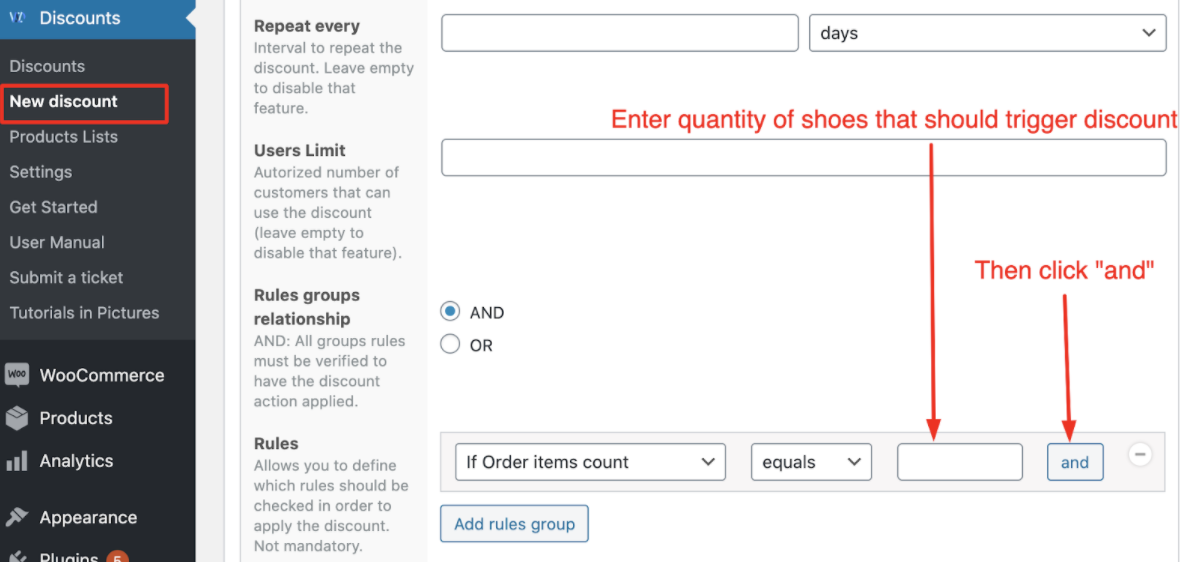
And then…
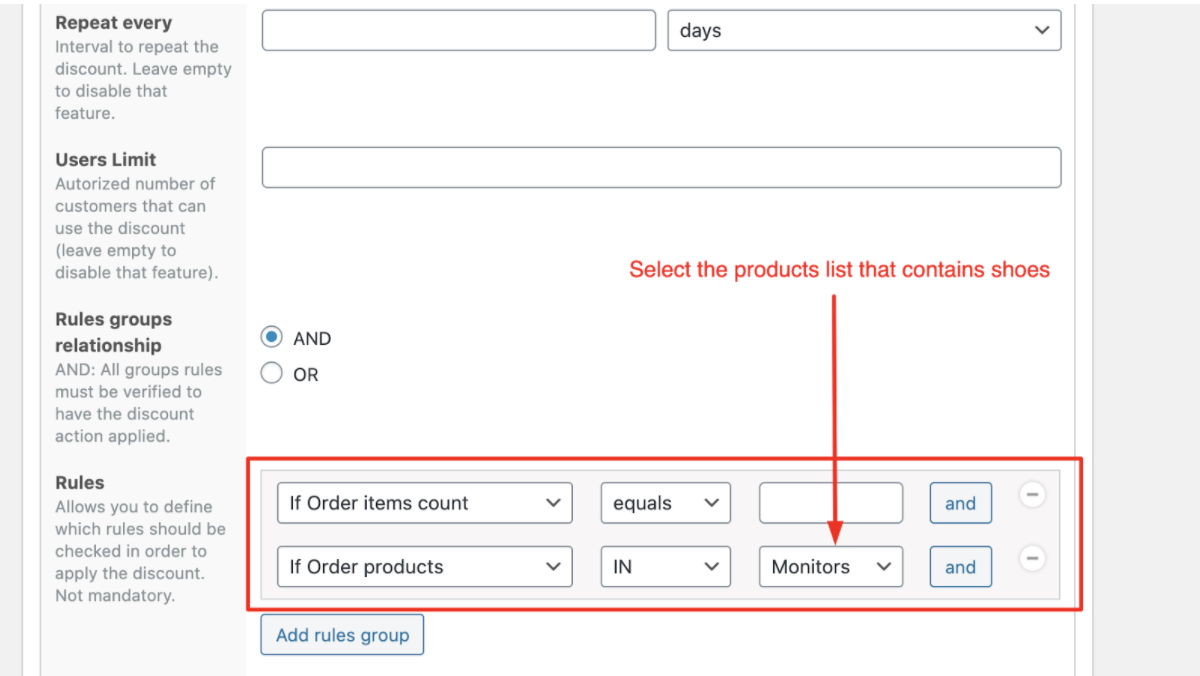
This addresses the number of products required to be purchased from list X (which could contain a bunch of products from a category(ies), tags, even simply, specific products, etc. to trigger a discount.
N.B: It is important to note that the two rules (in the screenshot above) need to be in the same group. If they are not, the plugin would consider them separately, meaning that satisfying either one of those 2 conditions would trigger the discount. A set of rules within the same group can be denoted by a grey background as highlighted in the screenshot above.
In the case where the discount is triggered by an amount, please follow the discount configuration below.
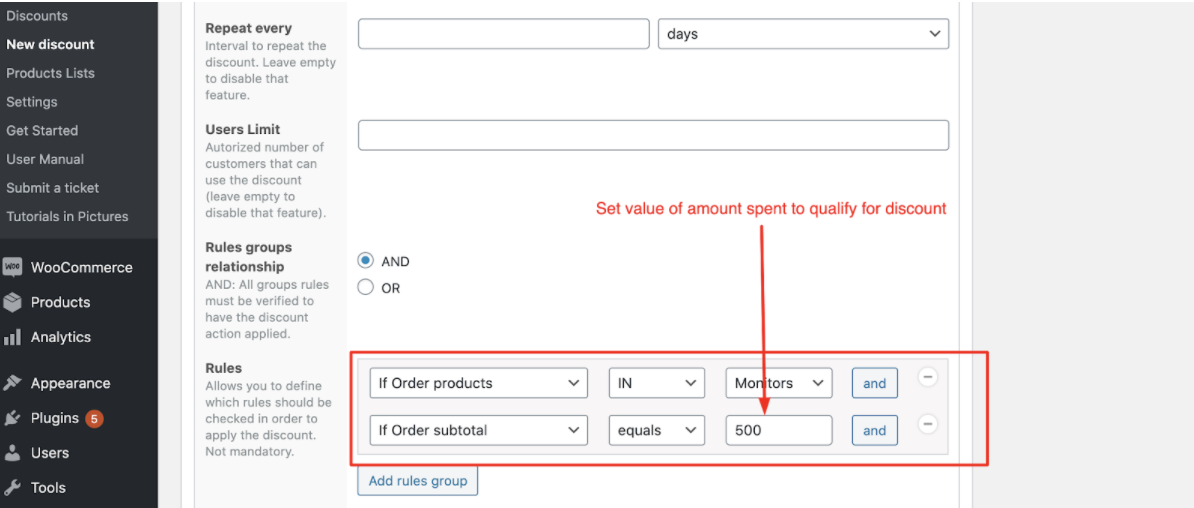
Next, we define the action to be taken should the above conditions be met.
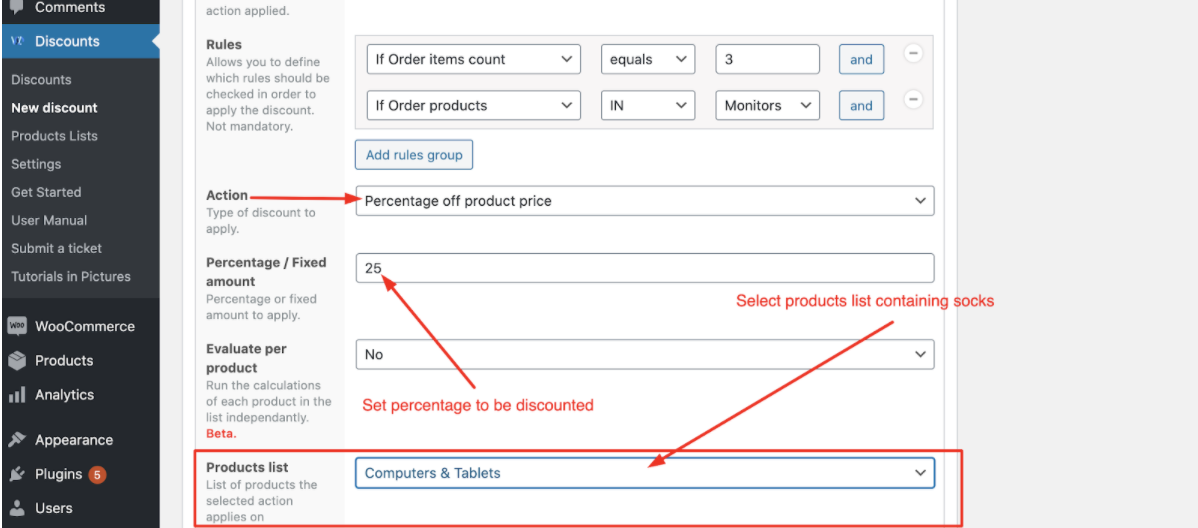
And lastly, don’t forget to save/publish your configured discount.
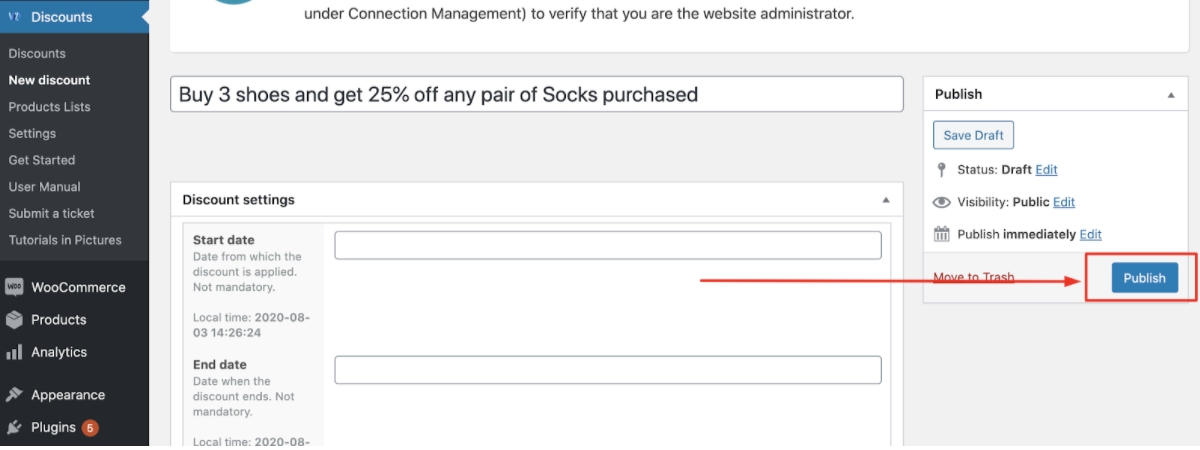
Conclusion
In conclusion, implementing discounts on a set of products when customers fulfill a minimum purchase condition on another set of products is a powerful strategy to drive sales, encourage cross-selling, and enhance overall customer satisfaction.
This flexible approach, though requiring the right tools or development, can help businesses maximize revenue, stay competitive, and gain valuable insights into customer preferences.
By tailoring discounts to their specific goals and audience, businesses can effectively leverage this strategy to boost their bottom line and improve the overall shopping experience.

